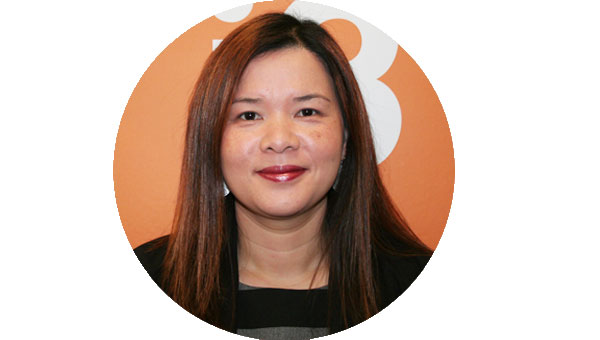This enables me to ask questions I didn't even know to ask!
- ED Consultant
Opportunity
To deliver our promise to improve patient experience and outcomes we need to provide timely acess to meaningful data that can be used for the redesign of care, implementation of evidence-based practice and continuous improvement.
Business intelligence (BI) tools are a type of application software designed to retrieve, analyse, transform and report data for business intelligence. The tools offer a suite of software applications including digital dashboards, data mining, and predictive analytics integrated into workflow. BI tools create automated reports and dashboards for users to slice and dice data on their own and perform their own reporting.
Prior to the implementation of the BI tool Qlik Sense, our main method for capturing and reporting data was static reporting. Answering questions through information requires a high level of technical ability – SQL skills, and in-depth knowledge of the data structures and therefore users (front line clinical staff, clinical leaders and managers) have relied on our Health Intelligence Service analysts to extract data and create reprorts. This is a time-consuming process, involving multiple steps and competing priorities and users experience long delays for information.
Our clinicians and managers have an ever increasing need for readily available information that can be used to inform decision making; they need agile, interactive solutions, and the more technically savvy want a self-service capability.
Aim
Implement the BI tool, Qlik Sense, at Waitemata DHB to provide an interactive, data discovery experience with dashboards of key information for 1000+ information users by 2019.
The key objectives of the project are to:
- empower all users, at all levels, to maximise their decision making capacity based on accurate, relevant and meaningful information
- enable the DHB to become a data driven, clinically led, outcomes-focused organisation
- reduce risk through increased knowledge of adherence to safety and quality initiatives and variations in practice and outcomes
- improve opportunities for successful planning and execution of clinically led service redesign through enriched knowledge and understanding of systems, processes and outcomes
Intervention
The project commenced in January 2017.
We developed a governance model and established a Steering Group and a Working Group.
We started with the development of simple data explorers that existed as static reports, focusing on core clinical data sets eg Emergency Department; Outpatients.
We migrated apps that we had developed using the BI tool QlikView over to Qlik Sense: Quality and Safety Markers; Patient and Whānau Care Standards data including: audits for falls, pressure injury, infection control (commode cleaning, contact precautions, hand hygiene and facilities cleaning); and patient experience results (Friends and Family Test).
Patient and Whānau Centred Care Standards App
We prioritised the development of Qlik Sense apps based on clinical champions and strategic priorities. We developed a time-line plan for app development.
Qlik Application Candidates
The Qlik Sense programme includes the development of dashboards to visualise clinical pathways, clinical excellence metrics, variation in and cost of care, and allow general exploration of clinical data. Once we have developed individual and clinical team-based patient experience reporting, and Patient Experience Outcome Measure (PROM) sets, we will be able to incorporate these measures in the clinicians’ dashboards.
Clinical Pathway App
As we build the programme, we are developing a community of clinician Qlik developers trained and enabled to create and customise their own dashboards. The programme is also developing a wider community of dashboard developers, including finance staff and project managers to increase access to data across the DHB.
Impact
Pre-implementation
Prior to Qlik Sense implementation the primary users of data were our Health Intelligence Service analysts who extract data and create reports for end users and decision makers.
In the period 2010-2015 the volume of annual requests to the Health Intelligence team for information increased by 66%, with the annual number of request rising sharply from 881 (2010) to 1932 (2015). The greatest period of growth occurred in the 2013-14 year with rises in ad hoc requests of 33%, new reports 63% and report modifications 69%. This growth showed limited signs of abating: in the six month period ending March 2016, 1,311 reports were accessed by 2,100 individuals.
The graph below demonstrates the growth of information requests over this period with projection to 2020 if measures were not taken to alter the demand for the service.
Making data accessible in a timely, more organised manner will mean clinicians do not have to spend their limited, non-clinical time making multiple data extracts and data report requests and sifting through large volumes of data.
What Success Will Look Like
We will know this project has succeeded when:
- frontline clinicians and operations managers across all services are using the tool to inform their decisions, service planning, care redesign and implementation of best practice
- clinical teams are systematically engaged in tracking outcomes and patient experience, using data to inform decision-making and for continuous improvement
- patient demographic, clinical indicator, outcome and experience data is immediately accessible, transparent and published in a meaningful way to staff
- the volume of ad hoc information requests and new report requests from frontline staff and operational managers to the Health Intelligence team has reduced
- the impact of changes in service delivery due to new models of care are measured and tracked with clinical, financial and operational data
- there are measurable improvements in patient flow through services for assessment, diagnostic procedures and treatment interventions as a result of increased understanding of service process, limitations and opportunities
- there is a measurable reduction in undesirable variation in care
Resources
- Complex Data Modelling to Answer Clinical Questions [Webinar Aug 2019]
- Acoustic Neuroma MRI Tracker [Qonnections Poster May 2019]
- Clinical Engagement Leads to Actionable Insights [Qonnections Poster May 2019]
- Complex Data Modelling for Complex Clinical Questions [Qonnections Poster May 2019]
- Improving Dental Health Service Delivery [Qonnections Poster May 2019]
- Data Discovery Programme [Poster Jul 2018]
- Qlik + Machine Learning for Bed Management [Poster 2018]
- Qlik for Care Redesign: General Surgery Care Pathways [Qonnections May 2018]
- Using Qlik Sense for Care Redesign Presentation [HiNZ Nov 2017]
- Qlik Application Candidates (Sep 2017)
Team Members
Executive Sponsor
- Penny Andrew, Director of i3
Working Group
- Delwyn Armstrong, i3 Head of Analytics
- Sharon Puddle, i3 Head of Digital Transformation
- Jane Yang, i3 Information Analyst
- Monique Greene, i3 Information Analyst
- Mandy Spencer, i3 Information Analyst - Outcomes + Experience
- Danny Hunter, i3 Information Analyst
- Josh Asi, Health Informatics Fellow
- Renee Kong, i3 Innovation + Improvement Project Manager
Community of Clinician Qlik Developers
- Stefan van der Walt, Paediatric Emergency Specialist
- Jonathan Wallace, RACMA Registrar + ICU Operations Manager
- Carl Peters, Endocrinologist + Diabetologist
Organisational Transformation Award 2019
We were recognised with the Organisational Transformation Award at the 2019 Qlik Digital Transformation Awards ceremony. The awards were part of the Qlik ANZ Health and Public Sector Data Analytics Summit, recognising some of Qlik’s most transformational customer stories across Australasia and teams who use technology and personalised intelligence to drive new business opportunities and increase value. Award winners are considered trailblazers driving remarkable digital transformation with the business intelligence tool Qlik.

i3 Data Discovery Team
Transformating Care with Qlik

Penny Andrew

Delwyn Armstrong

Sharon Puddle

Jane Yang

Monique Greene

Mandy Spencer
Danny Hunter





